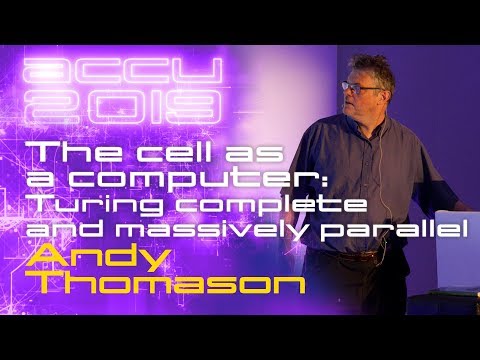Description:
Explore the fascinating world of biological computing in this ACCU 2019 conference talk. Discover how nature has been running a six-bit instruction set for four billion years, predating human-made computing devices. Learn about the parallels between biological systems and computer components, including the biological equivalents of transistors, ROM, and CPUs. Delve into the potential of biocomputers and their massive parallelism and storage capacity. Investigate the possibilities of interfacing with biological systems, such as installing debuggers in brain cells or disassembling genes. Gain insights into concrete numerical comparisons between biological and artificial computing systems, and ponder thought-provoking questions about the intelligence of everyday objects. Cover topics such as DNA, data storage in cells, biological RAM, instruction sets, motor proteins, ribosomes, transcription factors, ion channels, phosphorylation, lipid bilayers, cell death, power supply mechanisms, and the ATP synthase electric motor.
Read more

The Cell as a Computer - Turing Complete and Massively Parallel
Add to list
#Conference Talks
#ACCU Conference
#Data Science
#Bioinformatics
#Science
#Biology
#Human Biology
#Computational Biology
#Computer Science
#High Performance Computing
#Parallel Computing